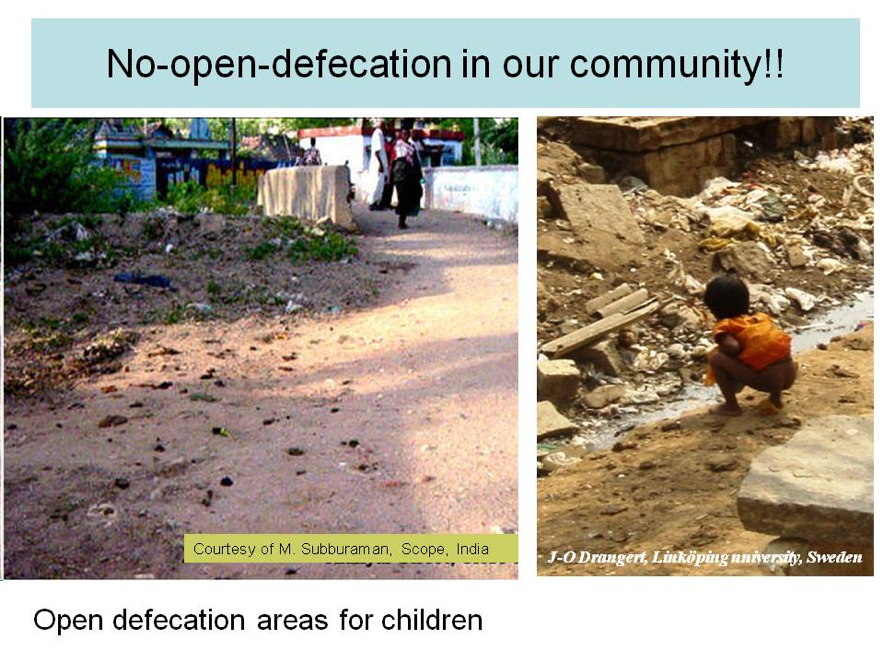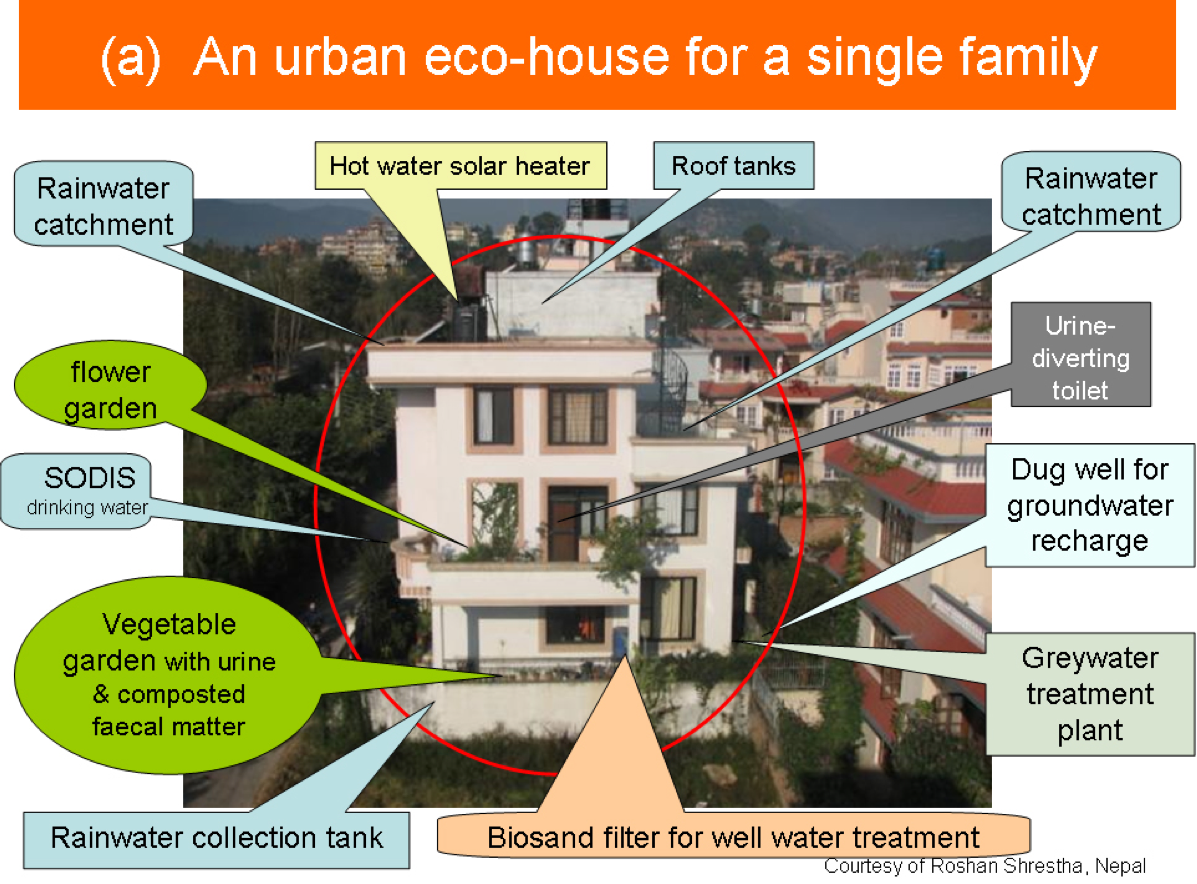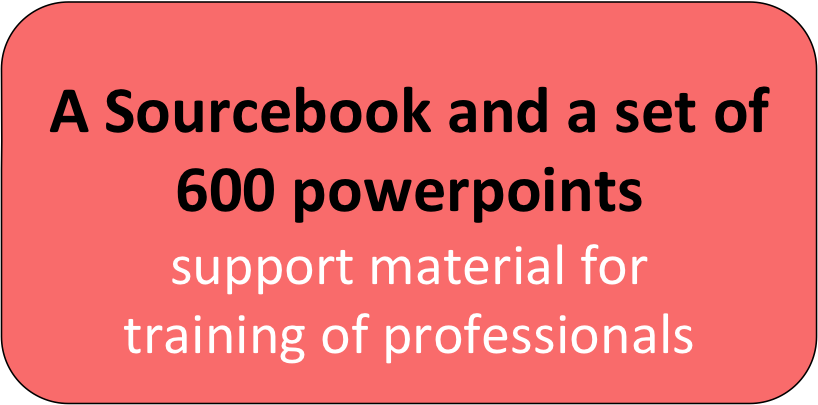Sustainable sanitation training material

Sustainable Sanitation for the 21st Century
A sourcebook for training is now available for free download
This sourcebook is the result of experiences gained over the last decade from more than 300 participants attending an international training course and ongoing research.
Sustainable Sanitation aims at protecting human and environmental health through safe use and reuse of available resources
Both Sourcebook and set of 600 animated PowerPoints provide the knowledge and skills required to address the five improvements below.
- There is no water scarcity in cities, only poor management of the available water.
- Morbidity can be reduced through washing hands and safe handling of child faeces.
- Future toxic shocks can be avoided through harnessing our chemical society by source control of products.
- Food security can be achieved through reduced wastage, recycling of nutrients and changes in diets.
- Households and residents hold the key to improvements mainly through improved sanitation routines, and also through exercising the power as consumers and voters.
The material is multi-disciplinary and covers management issues, town planning, civil and environmental engineering, public health, urban agriculture, etc.
- You can access information and useful references from the Sourcebook (700 pages in pdf format)
- You can combine your own training material with the PowerPoints you pick out of this set of 600 slides. Below are two examples:
Downloads
| Introduction: ppt - 0.7 MB, pdf - 2.4 MB |
Chapter 1 - Sustainable sanitation - a review
| Questions | Learning objectives | Download | |
| Module 1.1 Sanitary conditions in the world |
What functions should a sustainable system fulfill? Is sanitation in the world improving or not? | Sanitary conditions in various parts of the world. Critical understanding of data and functions. | ppt 2.3 MB pdf 2.5 MB |
| Module 1.2 Resources |
Where are the resources? What might be the problem to access them? | Limits of nutrients, water and staff. Understanding the role of sanitation. | ppt 0.9 MB pdf 1.1 MB |
| Module 1.3 Resource flows |
From where do resources come and where do they end up? | How resource flows are created and manipulated. Methods to analyse flows. | ppt 2.1 MB pdf 2.6 MB |
| Module 1.4 Demographic change |
Does population growth impact service levels? Is urbanisation a solution or a problem for improvement? | Urban-rural links. The role of demography in sanitation planning and implementation. | ppt 0.6 MB pdf 1.6 MB |
| Total Chapter 1 download: ppt - 3.6 MB, pdf - 7.7 MB | |||
Chapter 2 - Sanitation management today and in the future
| Questions | Learning objectives | Download | |
| Module 2.1 Sanitation arrangements |
Is there one system that suits most conditions or must we choose and combine? | Matching management with technology and local conditions. | ppt 9.6 MB pdf 2.4 MB |
| Module 2.2 Major changes over time |
How does consumption impact on reuse over time? What footprints are left? | Long-term impacts shaping sanitation arrangements and tracing origins of change. | ppt 1.5 MB pdf 1 MB |
| Module 2.3 From policy to action |
What is allowed to do? Do polluters really pay? | Translating guidelines & laws to local action and change. | ppt 3.7 MB pdf 1.8 MB |
| Module 2.4 User perspectives |
What are residents appreciating? Why? | Be sensitized to challenges of bottom-up approaches. | ppt 1.4 MB pdf 1.6 MB |
| Module 2.5 A way forward |
How to obtain all all the information we need? | Advance selection criteria for sustainable sanitation. | ppt 2.5 MB pdf 2.2 MB |
| Module 2.6 Plans and design |
What difference does good planning and design make? | Opportunities to improve sustainability provided by nature. | ppt 3.5 MB pdf 1.2 MB |
| Module 2.7 Construction and monitoring |
What bottlenecks are there for councils and residents? | The paramount role of good construction for operation. | ppt 2.4 MB pdf 2 MB |
| Total Chapter 2 download: ppt 25.9 MB, pdf 11.9 MB | |||
Chapter 3 - Sanitation and public health
| Questions | Learning objectives | Download | |
| Module 3.1. Exposure and effects in humans |
Public health as a driving force for sanitation? How are infectious diseases transmitted? What happens if and when we are exposed to pathogens? | The present global situation. Health risks related to sanitation. Pathogens of concern in water and sanitation systems. Epidemiology. | ppt 6 MB pdf 3.6 MB |
| Module 3.2. Environmental transmission |
Where do the pathogens we are exposed to come from? How do pathogens in excreta contaminate the environment? | Pathogens in different waste fractions. Different routes of transmission related to water and sanitation. Zoonotic diseases. | ppt 1.5 MB pdf 2.7 MB |
| Module 3.3. Pathogen reduction |
How persistent are pathogens in the environment? How can we prevent exposure and disease transmission in sanitation systems which involve the agricultural reuse of excreta? | Persistence of microorganisms in different environments. Treatment options for urine and faeces in theory. Barriers in agricultural reuse systems. | ppt 0.8 MB pdf 2.6 MB |
| Module 3.4. Health targets and guidelines |
Which targets can be achieved in relation to exposure and treatment? How are barriers used in guidelines to minimise health risks? | Health targets and the microbial risk concept. Faecal indicators. Options for guidelines and regulations (WHO). | [1] 5.3 MB pdf 5.9 MB |
| Module 3.5. Risk management |
Can we measure a risk of disease transmission? How can sanitation systems be evaluated? | Control strategies (barriers) and risk management. Systematic evaluations of health risks. | ppt 2.6 MB pdf 10.8 MB |
| Total Chapter 3 download: ppt - 16 MB, pdf - 10.9 MB | |||
Chapter 4 - Sanitation and the environment
Chapter 5 - Applications
Need help with your download? Yes, help
Original source
This support material for training of professionals for the sanitation and water sector has been developed by the main authors Jan-Olof Drangert of Linköping University / Vatema, Caroline Schönning of the Swedish Institute for Communicable Disease Control, and Björn Vinnerås of the Swedish University of Agricultural Sciences.


